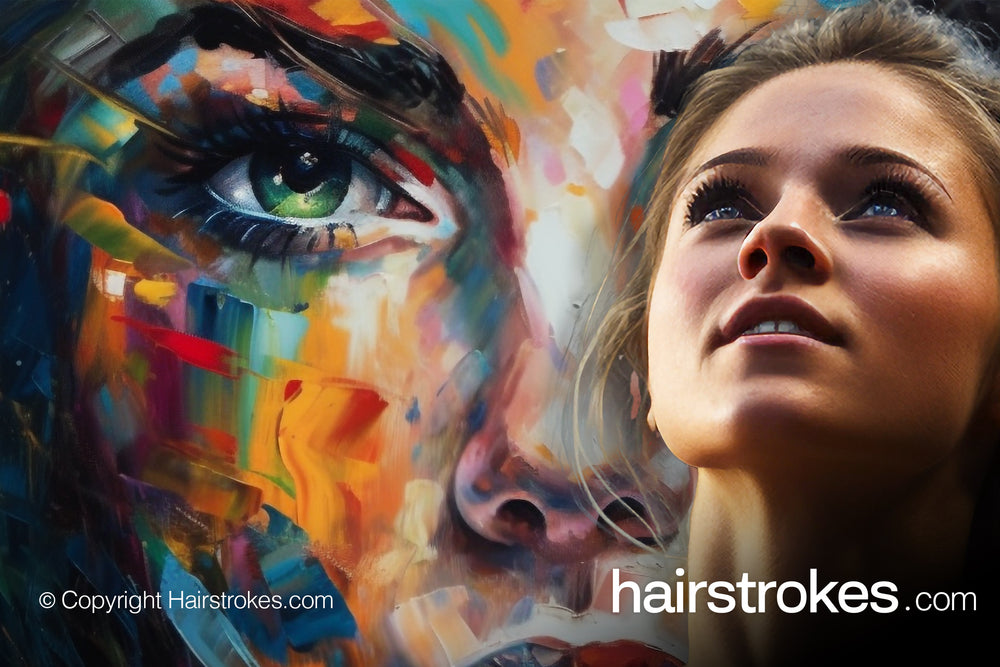4. Traits of Outstanding Trainers
For many elite artists who evolved into trainers, the real test wasn't just effectively teaching their art but also adhering to a structured training program. Their innate talent often flourished outside traditional frameworks, presenting a challenge in structured settings, especially when managing larger groups. Balancing their creative instincts with the demands of a regimented, punctual training schedule was not always straightforward.
To overcome this, many of these artist-trainers turned to the strategy of delegation. They brought on board co-trainers, organizers, and assistants who excelled in methodical planning and organization. This approach allowed them to concentrate on their strengths – innovating and advancing artistic techniques – while their team took care of the logistical aspects, ensuring the training sessions were conducted efficiently and on schedule.
Artists Driven by Innate Creativity
The most distinguished artists in the pigmentation industry are often driven by what seems like an innate, almost "biological" need to create and innovate. Unlike good artists, who can learn and hone various skills to advance in their careers, these extraordinary artists possess an inherent urge to break new ground and challenge the status quo. This instinct goes beyond the realm of systematic working and rule-following.
This natural tendency is evident in the fact that nearly all top-tier artists have developed their own unique techniques and styles in brow artistry. These innovations often emerge not as a part of a calculated marketing strategy but from a deep-seated drive to create something novel and unique. Interestingly, while these pioneering techniques often set new industry standards, achieving fame or recognition is usually not the primary motive for these artists. They innovate primarily from an internal compulsion to create, not for gaining followers or boosting their brand.
This creative impulse places them in a distinct and relatively rare category. As one highly successful artist put it, their ability to create extraordinary work is akin to that of a child prodigy. Yet, they acknowledge the critical role their team plays, not just in sustaining their business but also in compensating for their lack of interest in the managerial aspects. Without their support teams, these artists admit they might not even be inclined to handle the business side of their work.
Permanent Makeup: A Lucrative Arena for Artistic Expression
The journey of remarkable artists in transforming their exceptional creative abilities into financial success has not been straightforward. Many of these highly talented individuals initially struggled to monetize their skills. However, the field of Permanent Makeup (PMU) has proven to be an ideal sphere for such artists. The PMU industry is distinctive for not setting limits on the quality of work, offering a diverse range of opportunities, and possessing a strong financial structure that facilitates the monetization of various artistic activities.
Interestingly, these exceptional PMU artists often exhibit a complex relationship with money, usually showing less concern for financial gains compared to their more conventional counterparts. However, the business aspect, especially the management teams they have put together, is handled with great care and efficiency. The artistic brilliance of these leading artists not only ensures their own financial success but also opens up job opportunities for others in their circles.
Unconventional Career Trajectories
A notable aspect of these artists is that very few initially aimed to become PMU professionals. Their natural inclination was towards creativity, openness, and ideation, rather than a clear-cut career path. The transition into the PMU field for many was sudden, unplanned, and at times controversial. Reflecting their spontaneous and easygoing nature, their decisions to enter this industry were often made quickly and without much forethought.
The Unrelenting Quest for Mastery
A trait that unites exceptional artists in the PMU field is their relentless pursuit of self-improvement. These artists are not just diligent when necessity calls; they immerse themselves passionately in projects that elevate their skills. Their engagement often borders on obsession, and they’re willing to dedicate long hours, even overnight, if they’re captivated by their work. This deep-rooted enthusiasm is a boon when they step into teaching roles, as they inspire a similar zeal for continuous learning in their students.
However, despite their natural charisma and approachability, these premier artists need to embrace a structured, well-organized approach to be effective educators. Their potential as trainers is immense, but it flourishes best in an environment that provides structure and support.
When it comes to teaching, especially large groups, these artists’ magnetic personalities make them engaging instructors. Yet, they significantly benefit from the assistance of co-trainers who can manage detailed aspects of the course. This support is vital to maintain the training's flow and ensure comprehensive coverage of the curriculum. Without such balance, there’s a risk that these artists might end up focusing excessively on certain topics, leaving substantial parts of the intended material unaddressed by the end of the training session.



